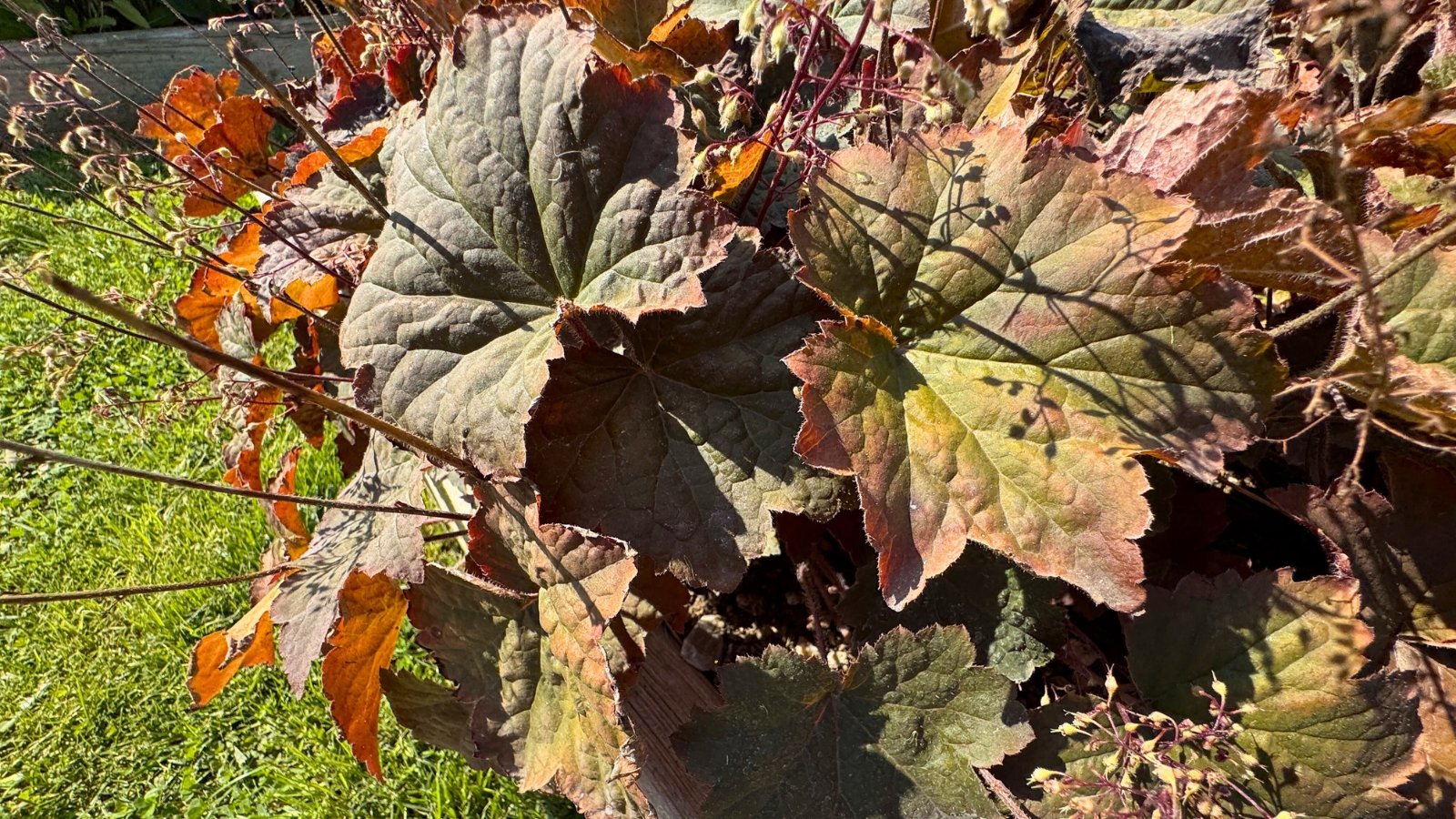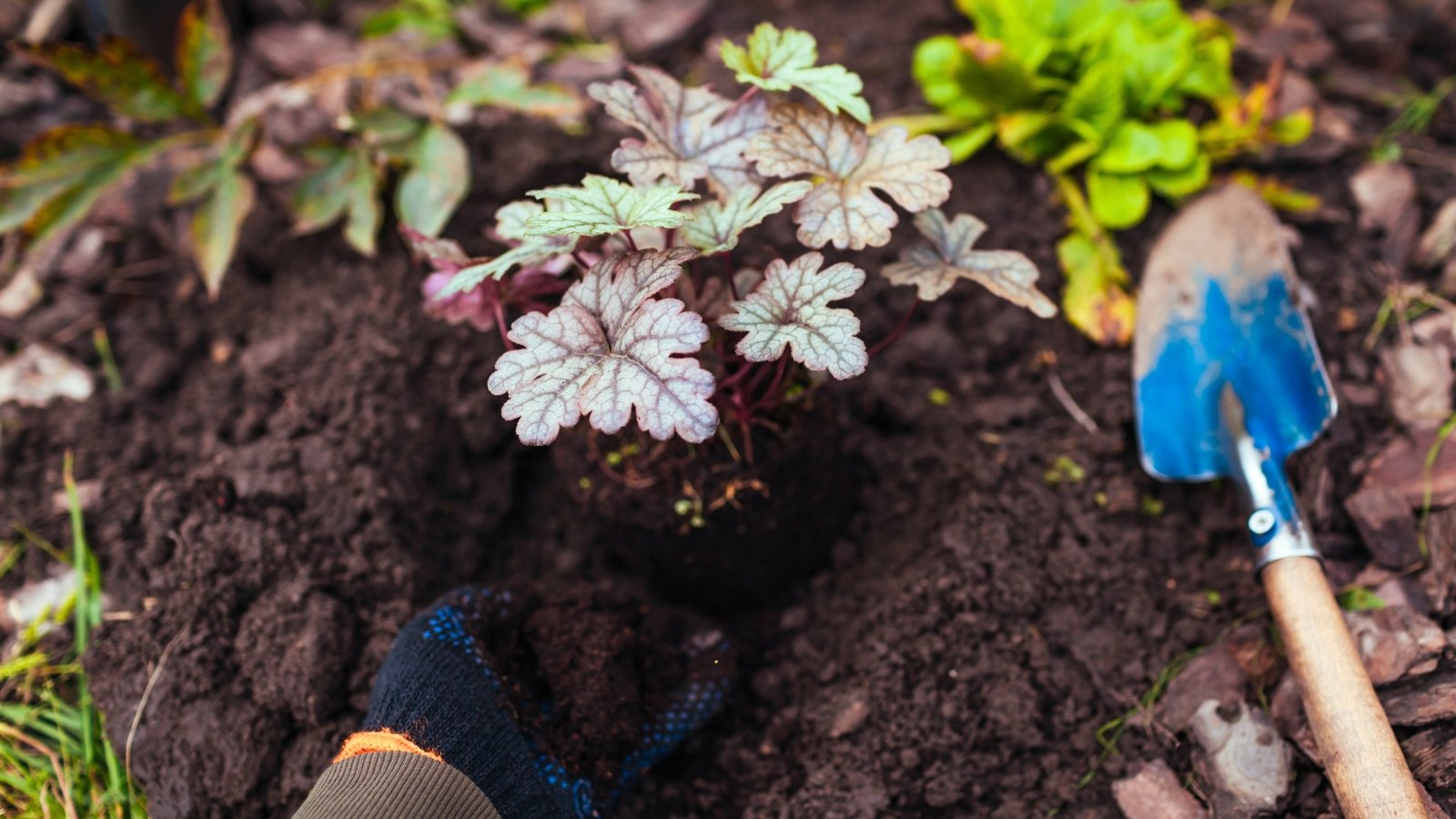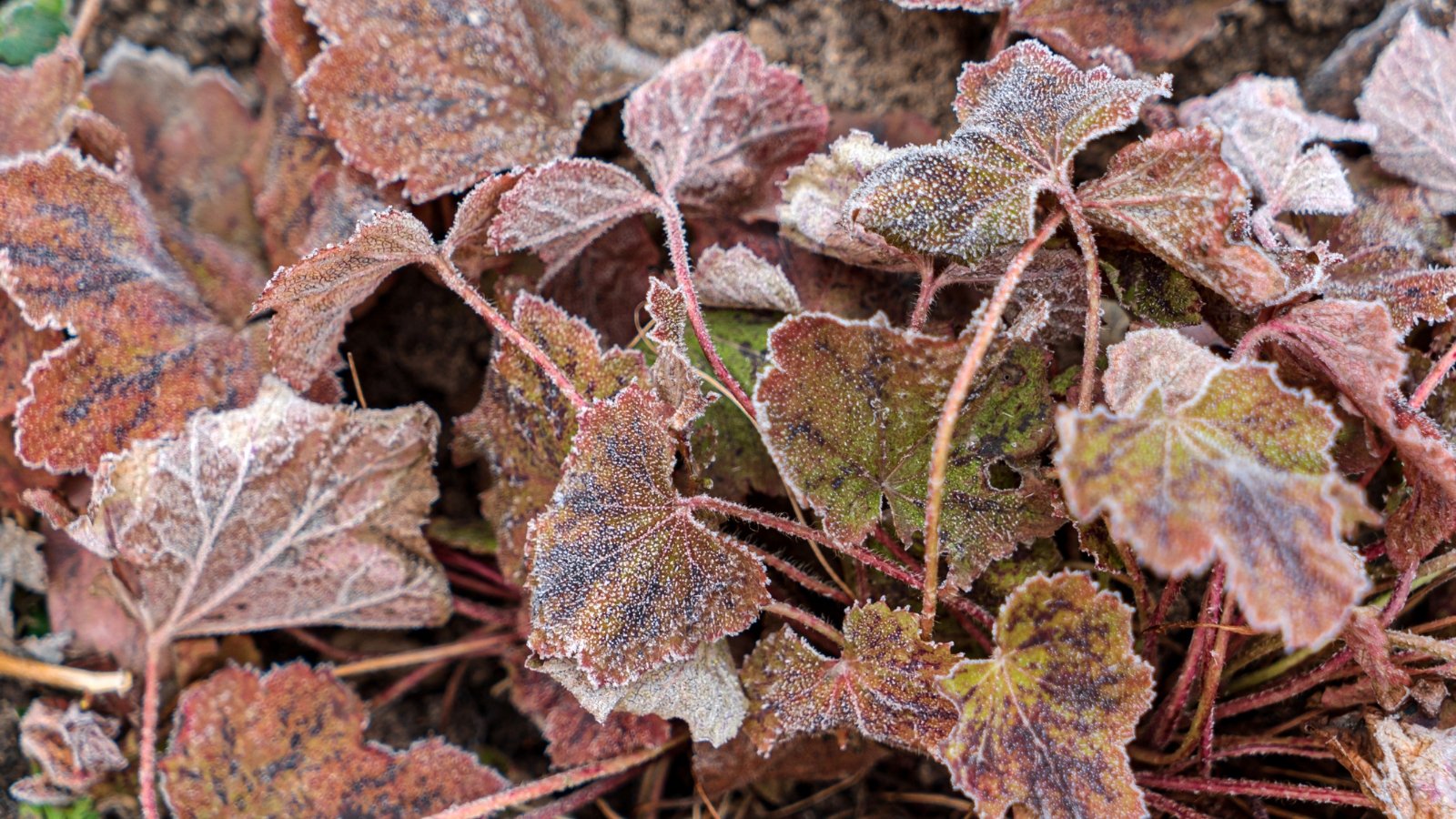PROTECT YOUR DNA WITH QUANTUM TECHNOLOGY
Orgo-Life the new way to the future Advertising by AdpathwayHuechera, also known as coral bells, brighten up shade gardens with their colorful foliage and tiny, bell-shaped flowers. You can mix a few varieties together for a colorful patchwork of foliage, or plant a few of these perennials alongside other shade-loving plants like hostas and astilbe.
While heucheras are hardy and low-maintenance plants, they’re not immune to all issues. The wrong environment, improper planting, and pests can all cause these plants to experience a decline in health.
If you notice your coral bell plant is looking sad or want to prevent future issues, take note of these common heuchera problems and solutions.
Too Much Light
 A too-sunny spot can leave coral bells looking stressed.
A too-sunny spot can leave coral bells looking stressed.One of my favorite attributes of coral bells is their ability to tolerate shade. They thrive when they’re tucked into woodland gardens, and they can tolerate full afternoon shade as long as they receive morning sun. The one thing they don’t like is full sun.
If you live in zones three, four, or five, you may be able to get away with planting heuchera in a location that receives a full day of sun. But growers in warmer climates shouldn’t expect these perennials to thrive in a bright location. Too much light can cause the plants’ leaves to become yellow or brown, especially near the edges.
Rather than adding these plants to your sunny garden, choose a location with afternoon shade or dappled light. They work well near woodland edges, beneath tree canopies, and on the east-facing sides of fences and buildings. If you’re already successfully growing shade plants like hostas and lungwort, try tucking your coral bells in the same location.
Crispy leaf edges may alert you that you’ve planted your heuchera in the wrong location. Fortunately, you can dig up your perennial and move it to a shadier location. Spring and fall are the best times to transplant, but moving the plants in the summer is okay as long as you keep the soil moist in the two weeks following relocation.
Poorly Draining Soil
 Soggy soil makes roots unhappy, and leaves start to yellow.
Soggy soil makes roots unhappy, and leaves start to yellow.Heuchera plants hate sitting in wet soil. One of the most common heuchera problems occurs when gardeners plant these perennials in compacted or poorly draining soil. This consistent moisture limits gas exchange around the plants’ roots, inhibits the uptake of vital nutrients, and encourages the development of fungal diseases.
Water puddling around your heuchera is one obvious sign that you’ve planted it in a location with poor drainage. Even if water percolates into the soil, it may not fully drain through the soil profile.
Yellowing leaves, stagnant growth, mushy roots, and wilting plants are all other potential symptoms of poorly draining soil. If you see any of these, investigate the ground under your coral bells. If it’s difficult to insert a finger into the soil, it’s probably compacted.
One solution involves loosening the soil with a digging fork or broadfork. If you opt for this method, make sure the tines of the fork are at least six inches away from the plant to avoid damaging its roots. Working a bit of compost and/or worm castings into the top few inches of soil can also improve the aeration and drainage.
Another option is to move your plant to a location with better drainage. Look for an area where water easily soaks into the soil, and consider mixing a few inches of compost into the soil to further improve drainage.
Too Much Water
 Overwatering in shade often causes more harm than good.
Overwatering in shade often causes more harm than good.Overwatering leads to similar symptoms as planting in poorly draining soil, but I like to think of these as two distinct heuchera problems. Even if you plant this perennial in a location with suitable drainage, watering too often will cause the roots to become stressed. Soft and mushy roots and/or stems, wilting plants, and stunted growth are all indicators that your coral bells are receiving too much water.
Heuchera plants like their soil to remain moist. While this may make it seem like overwatering is rarely an issue, the opposite is true. When people hear the plants like moisture, they often become overzealous with their watering can and hose, irrigating every day or two. Couple this frequent watering with a shady location, and you end up with wet soil.
If your heuchera is planted in a shaded or partially shaded location, you probably only need to water once a week. Rather than watering on a schedule, check the soil moisture with your finger and only water when the top inch feels dry.
Heuchera Rust
 Good airflow between plants prevents fungal diseases from settling in.
Good airflow between plants prevents fungal diseases from settling in.These perennials aren’t susceptible to many diseases, so pathogens rarely become major heuchera problems. However, this fungus often attacks plants.
Heuchera rust is caused by the fungus Puccinia heucherae, and it only infects members of the Heuchera and Saxifraga genera. Symptoms include small brown spots on the tops of the leaves and small raised bumps on the undersides. These bumps are orange in color and release rusty spores.
This fungus rarely kills the plants, but it can severely weaken them and stunt their growth. If you spot rust on your heuchera plants, remove and dispose of infected leaves.
You can help prevent future infections by avoiding overhead watering and maintaining proper spacing to allow for good airflow. Cleaning up dead and dropped foliage will prevent the fungus from overwintering and infecting the plants when the weather warms.
Sudden Changes in Temperature
 Sudden cold snaps can turn leaves black and mushy.
Sudden cold snaps can turn leaves black and mushy.Herchera plants are hardy in zones four through nine, and some can even survive the winter in zone three. While the plants won’t have any issues surviving cold winter days under a blanket of snow, an early warm spell followed by a cold snap often damages the leaves. You may notice black or brown stems and leaves, mushy foliage, and/or dead tissue.
The infected portions of the plant won’t recover, so remove them to encourage the healthy portions of the plants to grow. You can pull the infected leaves off your hands or trim them with a pair of sanitized clippers.
Insulating your plant during cold spells can help prevent this cold damage. Mulching around the base of the plant with wood chips, hay, or straw can help protect it from low temperatures, and it will buffer changes in soil temperature. You can also cover your plants with a floating row cover if you see an unusual cold spell in the weather forecast. If you don’t have access to a row cover, you can use a blanket or piece of burlap; just make sure to remove the material after the cold temperatures pass.


 2 weeks ago
16
2 weeks ago
16





















 English (US) ·
English (US) ·  French (CA) ·
French (CA) ·